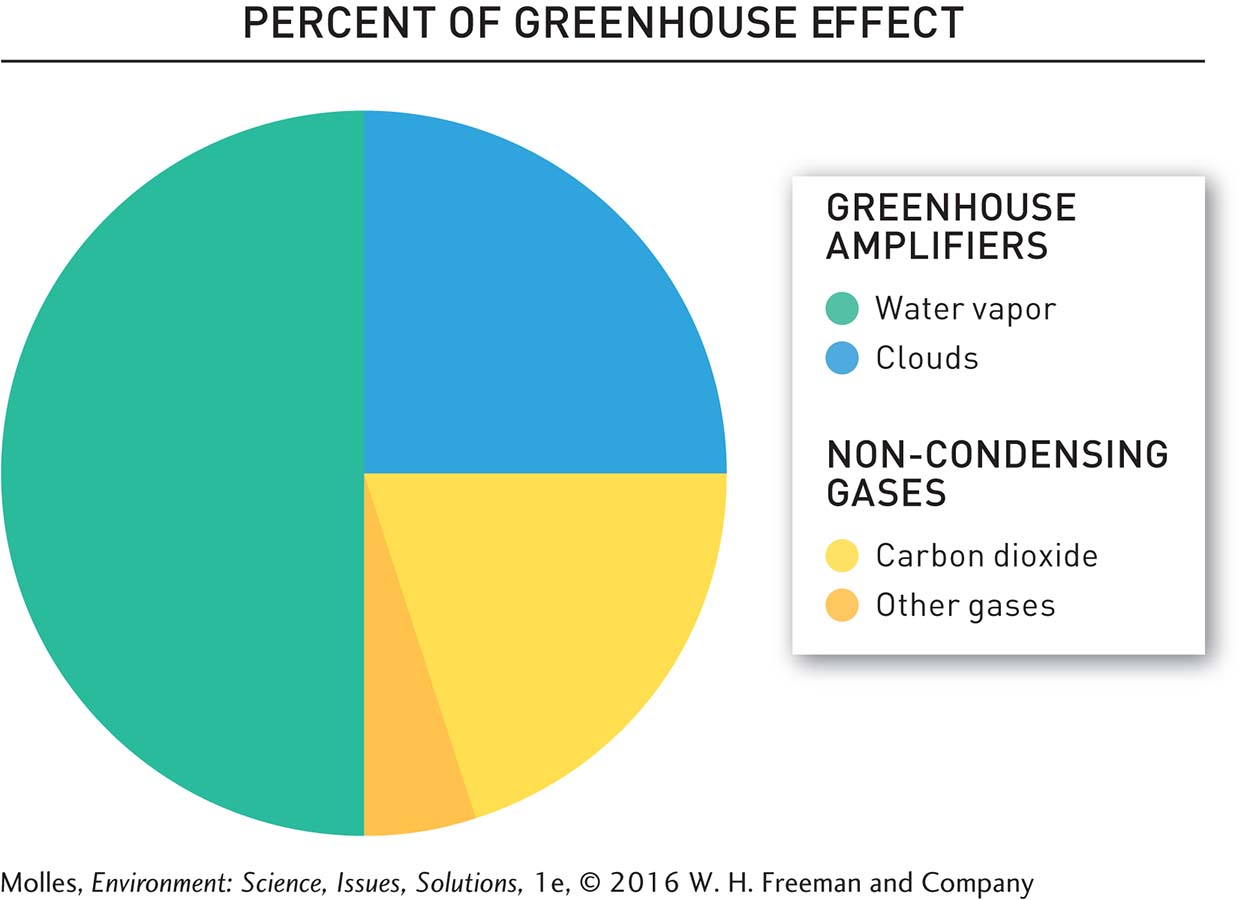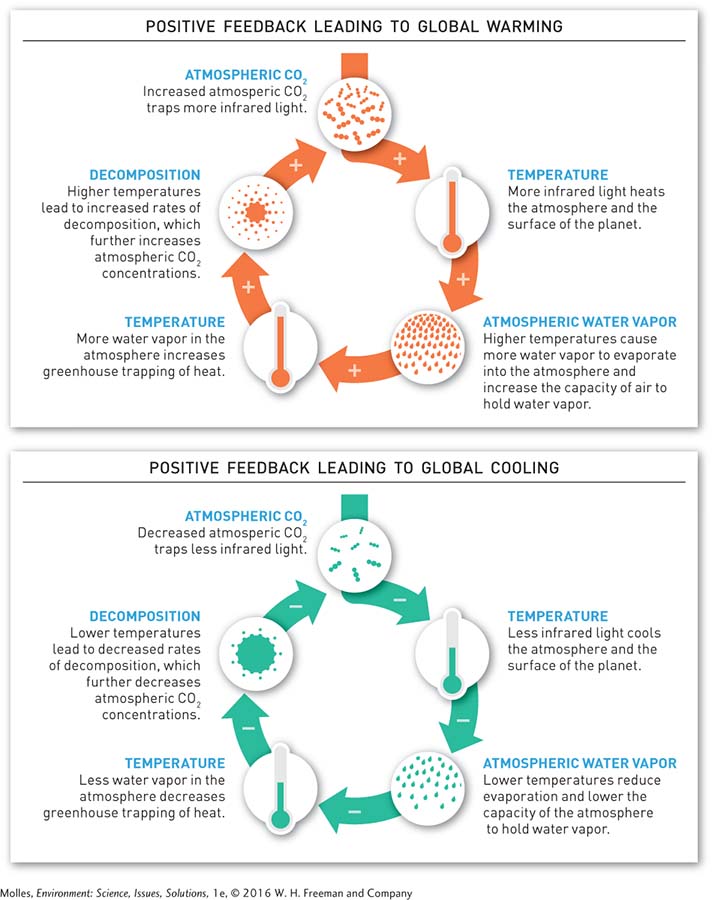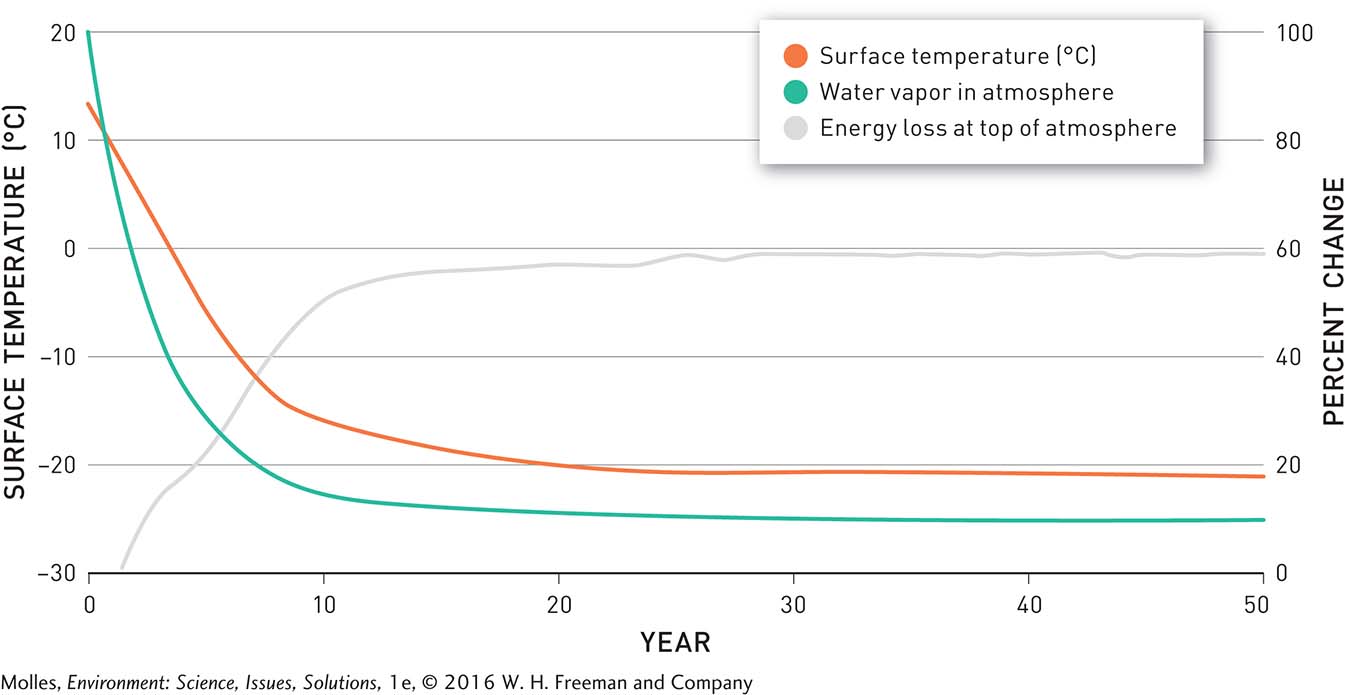14.4 Atmospheric CO2 appears to be the thermostat controlling global temperatures
Because of the global scale of the questions posed by climate scientists today, the vast amounts of data involved, and the inability to conduct conventional experiments, computers and computer models are essential to climate research. Climate models are built on systems of mathematical equations, and scientists use them to refine studies of a particular problem and test their hypotheses. In the early 2000s, scientists at the NASA Goddard Institute for Space Studies in New York City developed one such model, called ModelE (GISS ModelE), to simulate the interaction between Earth’s atmosphere and its oceans, land, and ice based on fundamental physics.
Using the program, they could take a snapshot of the impact of different gases in the atmosphere on global temperatures. They found that the most important gas in the atmosphere for absorbing infrared radiation and directing heat back to Earth’s surface is water vapor, which accounted for half of the greenhouse effect. Next, clouds absorb one-

negative feedback An increase in some factor in a system, such as a climate system, produces a decrease in that factor within the system.
You might conclude that carbon dioxide is a minor player in global temperatures, but the story is a little more complicated. As Arrhenius noted more than a century earlier, water vapor is much more variable than atmospheric CO2 in time and space. That’s because warm air absorbs more water vapor than cold air, which is why it can be so much more humid during a Florida summer than during a Colorado winter. Consequently, as CO2 emissions notch up global temperatures, the amount of water vapor in the atmosphere also increases, resulting in a positive feedback loop that amplifies the greenhouse effect (see Chapter 2, page 48). For instance, if CO2 concentrations in the atmosphere increase and global temperatures increase, the amount of water vapor in the atmosphere will also increase, resulting in higher rates of decomposition, which releases CO2 into the atmosphere. This is only one of several positive feedbacks that can increase the greenhouse effect (Figure 14.12). The reverse, a negative feedback, can also occur. A form of negative feedback is one in which an increase in some factor in a system, such as a climate system, produces a decrease in that factor within the system. For example, increased atmospheric CO2, higher temperatures, and increased moisture can stimulate plant growth, which will remove CO2 from the atmosphere.

So how big of an impact does carbon dioxide have on Earth’s climate? It’s not possible to run an experiment where we take CO2 out of the atmosphere in real life, but we can model it. In one simulation, the Goddard team eliminated CO2 and other greenhouse gases and watched the response over time. During the first year, global temperatures in the model dropped by nearly 5°C, and after 50 years temperatures had dropped nearly 35°C to –21°C, leaving only one-

Furthermore, as Arrhenius had predicted so long ago, atmospheric water vapor dropped precipitously by 90%. So, even though CO2 is only the third largest contributor to Earth’s greenhouse effect, the Goddard research team concluded that it is the primary determinant of global temperatures, with atmospheric water vapor levels following along as temperatures increase or decrease. Because we live on a Goldilocks planet, a temperature change of just a few degrees can have startling consequences for life on Earth, as we shall see in the next section.
Think About It
You might consider the increased burning of fossil fuels a massive experiment with Earth’s climate. What is missing in order to test the effect of this treatment? (Hint: What are the key parts of a well-
designed experiment?) Besides water vapor and carbon dioxide, what might be some other potential sources of positive or negative feedback in the climate system?
14.1–14.4 Science: Summary
The composition of planetary atmospheres accounts for much of the differences in temperatures among the planets in the solar system.
Based on two centuries of scientific research, we know that trace gases in the atmosphere, including water vapor, carbon dioxide, and nitrous oxide, absorb infrared light and heat the planet’s surface—
Ice cores and other lines of evidence show periods of global low temperatures coinciding with low CO2 concentrations, and high temperatures with high CO2 concentrations. Such cycling also coincides with cycles in Earth’s orbit around the Sun, wobble on its axis, and tilt in its axis of rotation.
CO2 acts as a thermostat for global temperatures: As CO2 levels rise, Earth’s temperature slowly increases, which adds water vapor to the atmosphere, causing temperatures to increase even more in a positive feedback loop. Even small changes in CO2 levels can result in climate changes with serious impacts on Earth’s biodiversity and on human, social, and economic systems.